If raw honey is so good for us, why do we need gamma irradiated honey? And what is medical grade honey?
Though this term is currently not very familiar to many, medical grade honey is honey sterilized using a minimally invasive method: gamma irradiation.
It may sound super toxic and dangerous but it is not. It is the most safe form of sterilizing honey, with minimum changes in honey’s composition. And this honey can be given to babies, too!
But if honey has an acidity and high viscosity that can inhibit any microbial growth, why do we need honey to be sterilized? Because honey can be contaminated with spores (which contain bacteria in a conservation form) of Clostridium botulinum, Clostridium tetani, bacillus subtilis or others.
See what happens if an infant is given honey contaminated with C. botulinum. And because honey is an excellent antibacterial mostly used on infected wounds of any type.
This type of sterilization is the method big producers use to make medical grade honey.
What is radiation?
Radiation is the process by which energy is emitted as either particles or waves. It can take the form of sound, heat, or light. However, by radiation people generally understand radiation from electromagnetic waves, radio waves, microwaves and X-rays. Today we are more concerned about wireless devices than a mammography – which is somehow hilarious!
We should first know that atoms form the basic building blocks of all matter. (like a lego brick if you want). There might be trillions of atoms in a single cell.
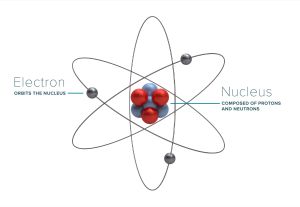
An atom consists of a nucleus, made of positively-charged protons (and sometimes neutrally-charged neutrons) and an outer cloud of electrons, which have a negative charge. The positive charge of a single proton is equal to the negative charge of a single electron, though the nucleus (formed by protons) has a large size and weight, while electrons are extremely small and light.
The atom has a net charge of zero, due to the nature of opposite charges attracting each other.
When radiation occurs, the atom either loses or gains an electron and becomes an ion, carrying a charge. It will then seek bonds with other charged particles in order to regain a neutral balance, potentially leading to new molecules being formed.
Non-ionizing radiation means not enough energy to knock electrons off atoms that it interacts with or breaks chemical bonds in molecules. Radio and microwave energy are non-ionizing radiation and are considered harmful only to the extent of the amount of heat energy it transfers to whatever it hits, which is, for example, the way microwaves cook food.
Ionizing radiation is caused by unstable atoms giving off energy to reach a more stable state, involves changing the basic makeup of atoms in cells, and more specifically the DNA molecules inside of cells, thus being more of a health threat to humans.
Ionizing radiation, which is caused by unstable atoms giving off energy to reach a more stable state, is more of a health threat to humans because it involves changing the basic makeup of atoms in cells, and more specifically the DNA molecules inside of cells. It does, of course, take a very strong dose of radiation to substantially damage a cell’s structure.
Natural products that counteract the side effects of radiation
Is it true that X-Rays give us cancer in 20 years? How can we protect ourselves from radiation?
Gamma rays, X-rays, visible light, and radio waves are all forms of electromagnetic radiation. The only difference is the frequency and hence the energy of those photons. Gamma rays are generally the most energetic of these.
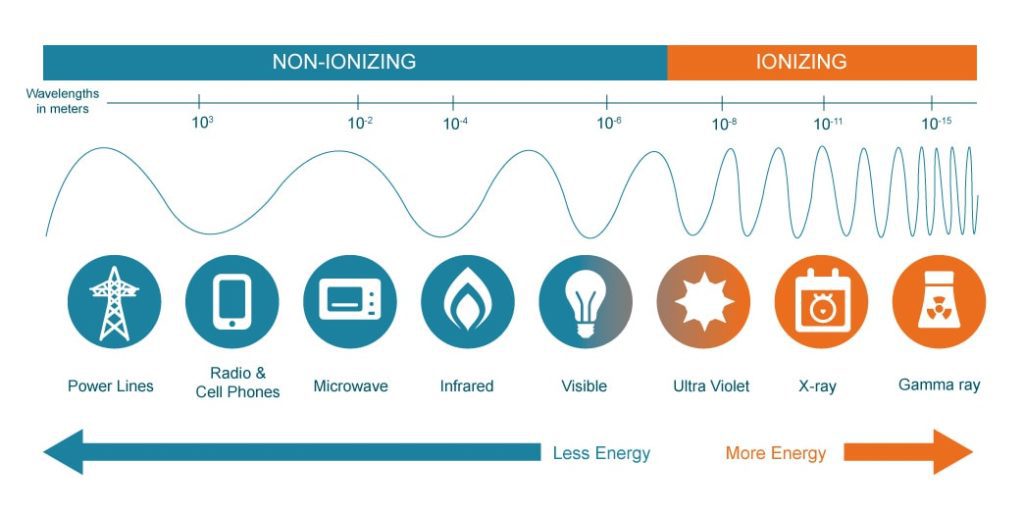
Sterilizing food with radiation!
When administered at appropriate levels all forms of ionizing radiation (electron beams, X-rays and gamma rays) can sterilize food but also objects, including medical instruments and disposables such as syringes.
Ionizing radiation may be used to kill bacteria in food or other organic material, including blood. However, food irradiation, while effective, is seldom used due to problems with public acceptance.
![]()

That the USDA and FSIS (Inspection Service) recognize irradiation as an important technology to protect consumers? Fresh meat and poultry including whole or cut up birds, skinless poultry, pork chops, roasts, stew meat, liver, hamburgers, ground meat, and ground poultry are approved for irradiation.
The most commonly irradiated foods are fruits, vegetables, poultry, fish, herbs/spices.
What is gamma irradiation?
Gamma rays are a form of electromagnetic radiation—like x-rays, but with higher energy. The radioisotope cobalt 60 is used as the energy source in gamma irradiation with the irradiation process taking place in a specially designed cell.
Gamma rays kill bacteria by breaking the covalent bonds of bacterial DNA. The unit of absorbed dose is kiloGray, expressed as kGy. The absorbed dose is determined by product density, pack size, dose rate, exposure time and to some degree by plant design.
Advantages:
· It has a high penetration capability. This enables moderately dense or sealed products to be processed with relative ease and facilitates treatment of palletized product.
· It is a process that does not generate heat or moisture.
· It has a quick turnaround time.
· There is no residual radioactivity after irradiation.
· It requires no quarantine time post processing.
Gamma irradiation is the method used for the sterilization of medical devices and pharmaceuticals (see here a list with the most common things sterilized by this method).
Doesn’t gamma irradiation change the properties of honey?
It does. A little. Any kind of treatment causes chemical changes in food. To different degrees.
According to a study published in 2014 by Hussein S. Z. et al., “Does gamma irradiation affect physicochemical properties of honey?“, gamma irradiation does some changes in the composition of honey.
The study analyzed the changes that took place after gamma-irradiating 2 types of Malaysian honey: Gelam and Nenas.
– Some parameters remained unchanged: pH, acidity, minerals and sugar contents
– Some parameters decrease significantly: moisture, vitamin E contents and HMF level
– Some parameters increased significantly: color intensity and vitamin C content.
Considering that this honey is used externally, not internally, these changes do not affect the wound healing properties of honey.
Does gamma irradiation change honey’s antibacterial power?
No.
• The study conducted by Peter Molan in 1996, entitled “The effect of gamma-irradiation on the antibacterial activity of honey.“, showed that there was no significant change found in either type of antibacterial activity of the honeys studied, peroxide activity (in two honeys with antibacterial activity due to enzymically-generated hydrogen peroxide) or non-peroxide activity (in three samples of manuka honeys).
See Antibacterial factors in honey
The samples were tested for some hard-to-kill bacteria before and after gamma irradiation.
The honeys were tested against Staphylococcus aureus and showed no significant change in either type of antibacterial activity resulting from this form of sterilization of honey, even when the radiation was doubled (to 50 kGy).
Is gamma irradiation efficient in sterilizing honey?
Yes. The same study tested honey seeded with spores of Clostridium perfringens and Clostridium tetani (10000 and 1000 spores g-1 of honey, respectively) and showed that 25 kGy of gamma-irradiation was sufficient to achieve sterility.
• The study by Norimah Yusof et al. presented at the International Nuclear Conference 2002, “Irradiation of honey for food and medicinal purposes“, analysed the effects of gamma irradiation on some local honeys: Pucuk daun, durian, gelam, bunga gelam and Asli and three imported honeys: manuka Clement, Waitemata and Capilani Sweet Meadow.
The results showed that:
– Gamma irradiation at 25 kGy and 50 kGy (in gelam, pucuk daun, durian, manuka clement and waitemata) did not affect the antibacterial property of the honey when after irradiation honey was added into the bacterial suspension of staphylococcus aureus.
– Heat at 50° C did not reduce the antibacterial property of irradiated honey.
– All local honeys showed antimicrobial indicated for its high medicinal value.
The conclusion of the study is that that “gamma irradiation is useful to decontaminate honey from pathogenic contaminants or even to sterilise honey for safe use without any changes in its organoleptic and antibacterial property.”
• Another study from 1995, “The sterilization of honey with cobalt 60 gamma radiation: a study of honey spiked with spores of Clostridium botulinum and Bacillus subtilis.”, conducted by Postmes T et al., try to identify the lowest dose of irradiation needed for sterilization.
For this they used six batches of honey and gamma irradiated them with 6, 12, 18, 22 and 25 kGy Cobalt-60.
– All batches contaminated with Bacillus subtilis proved to be sterile after irradiation with a dose of 25 kGy.
– All baches of honey spiked with Clostridium botulinum at up to 5000 spores per 50 g honey, which is the upper limit of natural contamination were sterilized with only 18 kGy.
Medical grade honey is honey which was sterilized using gamma irradiation.
Here are some examples:
– Manukaguard Medical Grade Manuka Honey and a very good Nasal Spray
– Medihoney
– Activon
– Surgihoney
– Purao
– Revamil
– Meloderm
They are all excellent natural products, made from either manuka honey or other type of honey, with high antimicrobial properties, which were sterilized using gamma irradiation.
And yes, Manukaguard Medical Grade Manuka Honey can be given to children under 1 year old.
=============
=============
Other references:

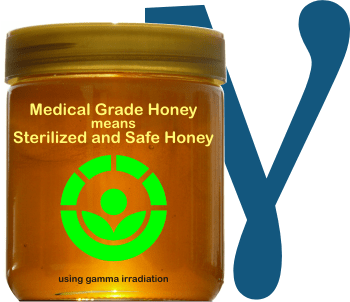
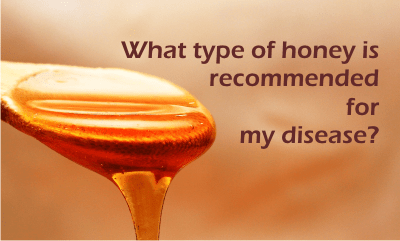

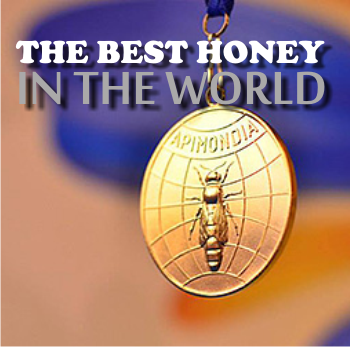
Hi Laura, Thanks for your very interesting web site and, as the Past President of the Auckland Beekeepers Club in New Zealand, I will pass on the web site contact information to our close to 700 members, so they can learn the health benifits of all the products from our hives! One of the most interesting sections was that about gama colbalt 60 irradiation and , for some time now, thought that it would be benifitial if as beekeepers, we could irridate our surplus equipment going into winter storage against any disaeses such as American Foul Brood, and wax moth or small hive beetle eggs. Thanks again for the informative site. Kind Regards
Very Well, Love to know that Gamma irradiated honey is more powerful than raw honey.
I have read about black honey fighting cancer. Any thought s out there?
Black honey, though it is called honey, is not produce by bees. Therefore I am not familiar with this product. But if it is true, then some stdies must be available on ncbi.com. L.